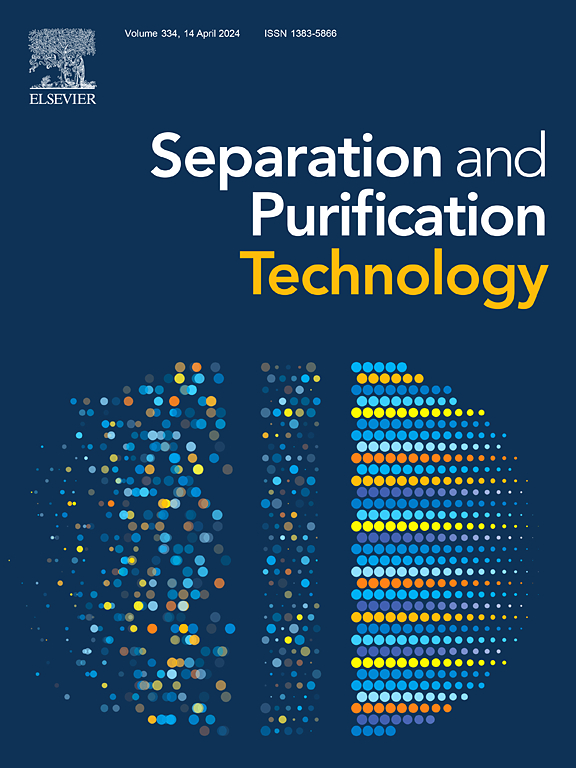Triclosan removal using high-silica zeolites: A novel insight via statistical physics modelling
IF 8.1
1区 工程技术
Q1 ENGINEERING, CHEMICAL
引用次数: 0
Abstract
This research describes the application of a double molecular stacking model, based on statistical physics theory, to analyze and explain the adsorption mechanism of triclosan on different high-silica zeolites. Modelling results indicated that molecules of this pollutant were adsorbed via different configurations on surfaces of tested zeolites where non-parallel, parallel, and mixed orientations occurred depending on tested systems. The adsorption capacities to remove triclosan from water using high-silica zeolites depended on their composition and textural parameters where the best zeolite showed a high surface area. Calculated adsorption energies ranged from 15 to 26 kJ/mol for all tested systems. This modelling approach indicated that triclosan separation mechanism was controlled by physical interactions where hydrogen bonding and van der Waals forces played a relevant role to remove this pollutant. A thermodynamic analysis of these adsorption systems was also performed. These theoretical results contribute to characterize the adsorption properties and mechanism of high-silica zeolites to remove toxic organic compounds from water利用高硅沸石去除三氯生:通过统计物理建模获得新见解
本研究介绍了基于统计物理学理论的双分子堆积模型在不同高硅沸石上的应用,以分析和解释三氯生的吸附机理。建模结果表明,这种污染物的分子通过不同的构型吸附在测试的沸石表面,根据测试系统的不同,出现了非平行、平行和混合取向。使用高硅沸石去除水中三氯生的吸附能力取决于其成分和质地参数,其中最好的沸石显示出较高的表面积。所有测试系统的计算吸附能介于 15 至 26 kJ/mol 之间。这种建模方法表明,三氯生的分离机制是由物理相互作用控制的,其中氢键和范德华力在去除这种污染物方面发挥了重要作用。此外,还对这些吸附系统进行了热力学分析。这些理论结果有助于说明高硅沸石去除水中有毒有机化合物的吸附特性和机理。
本文章由计算机程序翻译,如有差异,请以英文原文为准。
求助全文
约1分钟内获得全文
求助全文
来源期刊

Separation and Purification Technology
工程技术-工程:化工
CiteScore
14.00
自引率
12.80%
发文量
2347
审稿时长
43 days
期刊介绍:
Separation and Purification Technology is a premier journal committed to sharing innovative methods for separation and purification in chemical and environmental engineering, encompassing both homogeneous solutions and heterogeneous mixtures. Our scope includes the separation and/or purification of liquids, vapors, and gases, as well as carbon capture and separation techniques. However, it's important to note that methods solely intended for analytical purposes are not within the scope of the journal. Additionally, disciplines such as soil science, polymer science, and metallurgy fall outside the purview of Separation and Purification Technology. Join us in advancing the field of separation and purification methods for sustainable solutions in chemical and environmental engineering.
 求助内容:
求助内容: 应助结果提醒方式:
应助结果提醒方式:


